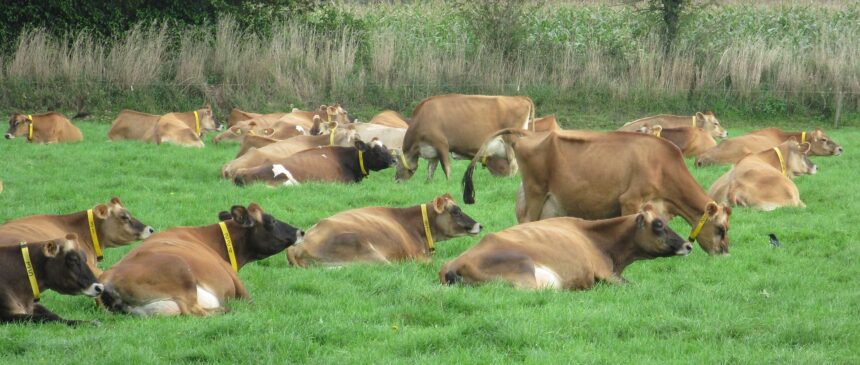Jersey cattle, known for their distinctive fawn color and exceptional milk production, are a popular choice for dairy farming in South Africa. If you’re considering breeding and farming Jersey cattle, there are several essential aspects to understand to ensure the health, productivity, and well-being of these remarkable animals. Here are ten crucial things you should know about breeding and farming Jersey cattle in South Africa:
1. Distinctive Characteristics:
Jerseys are a small to medium-sized breed known for their light brown color, white facial markings, and dark eyes. They are recognized for their gentle temperament and efficient milk production, making them a valuable asset in the dairy industry.
2. Milk Production:
Jersey cows are renowned for their high milk production with a butterfat content that exceeds other dairy breeds. This makes them an excellent choice for dairy farmers looking to produce quality milk for various dairy products.
3. Adaptability:
Jersey cattle are well-suited to various climates, including the diverse conditions found in different regions of South Africa. Their adaptability makes them a versatile choice for dairy farming in various environments.
4. Nutritional Requirements:
To maintain optimal health and milk production, Jersey cattle require a well-balanced and nutritious diet. Farmers should provide a mix of high-quality forages, grains, and supplements to meet the specific nutritional needs of the breed.
5. Breeding Programs:
Establishing a successful breeding program is essential for maintaining a healthy and productive Jersey herd. Farmers should focus on selecting breeding stock with desirable traits such as high milk production, good conformation, and disease resistance.
6. Health Management:
Regular veterinary care, vaccinations, and preventive measures are crucial for maintaining the health of Jersey cattle. Implementing a comprehensive health management program helps prevent diseases and ensures the overall well-being of the herd.
7. Housing and Facilities:
Providing appropriate housing and facilities is vital for the comfort and productivity of Jersey cattle. Adequate shelter, ventilation, and access to clean water are essential components of a well-designed dairy farm.
8. Reproduction and Calving:
Understanding the reproductive cycle of Jersey cattle is key to successful breeding. Farmers should monitor estrus cycles, implement effective artificial insemination programs, and provide proper care during calving to ensure the health of both cows and calves.
9. Milking Practices:
Efficient and hygienic milking practices are essential for maintaining the quality of Jersey milk. Implementing proper milking routines, sanitation protocols, and equipment maintenance contributes to the overall success of a Jersey dairy farm.
10. Market Considerations:
Farmers should be aware of market trends, demand for Jersey milk, and potential avenues for selling dairy products. Establishing relationships with local dairy processors and markets is crucial for a sustainable and profitable Jersey cattle farming operation.
In conclusion, breeding and farming Jersey cattle in South Africa can be a rewarding venture for dairy enthusiasts. Understanding the unique characteristics of the breed, implementing effective breeding and health management programs, and providing optimal conditions for milk production are key factors in the success of a Jersey cattle farm. By prioritizing the well-being of the herd and staying informed about best practices, farmers can contribute to the growth and sustainability of the dairy industry in South Africa.
Join 'Farmers Mag' WhatsApp Channel
Get the latest Farming news and tips delivered straight to your WhatsApp
CLICK HERE TO JOIN






